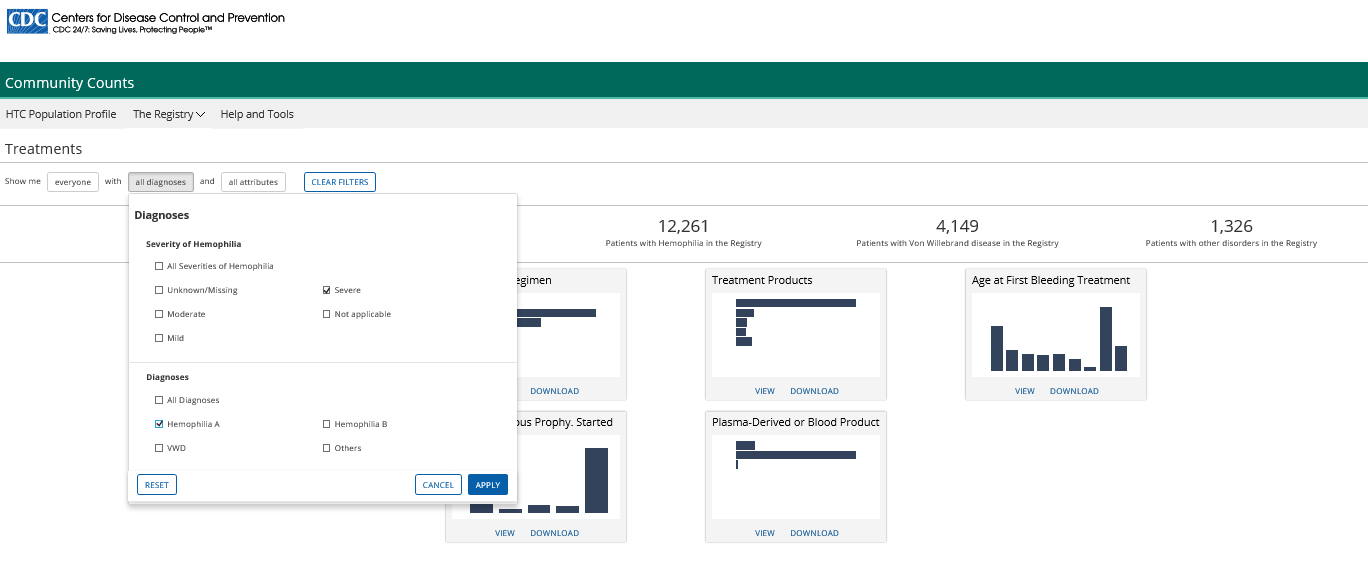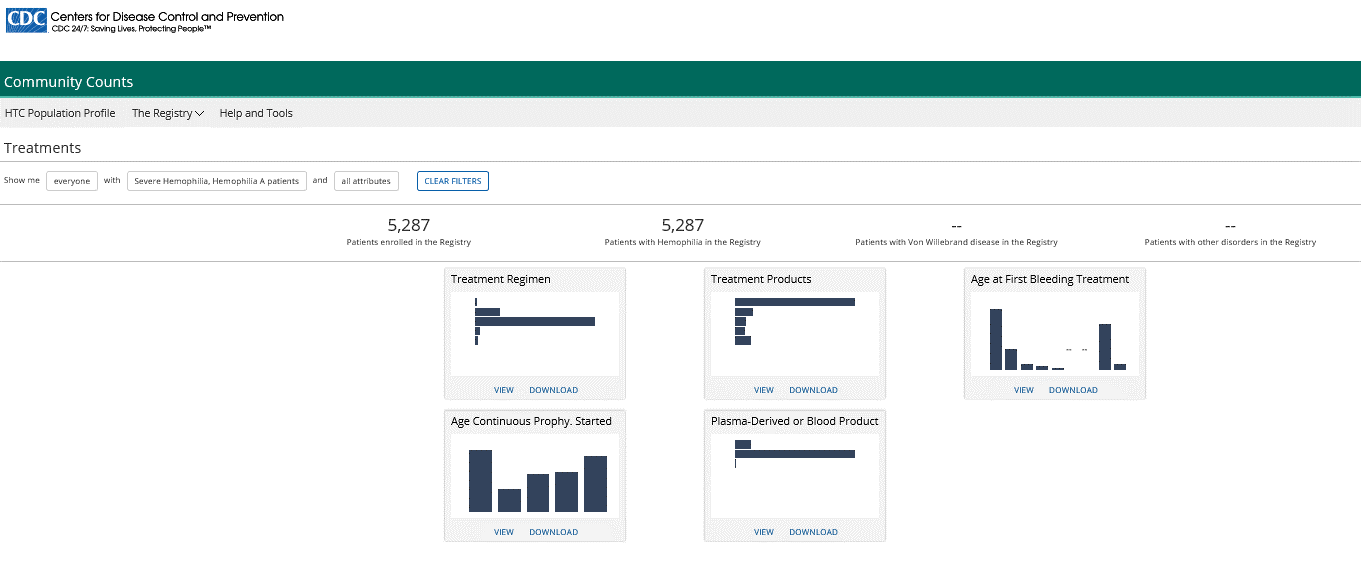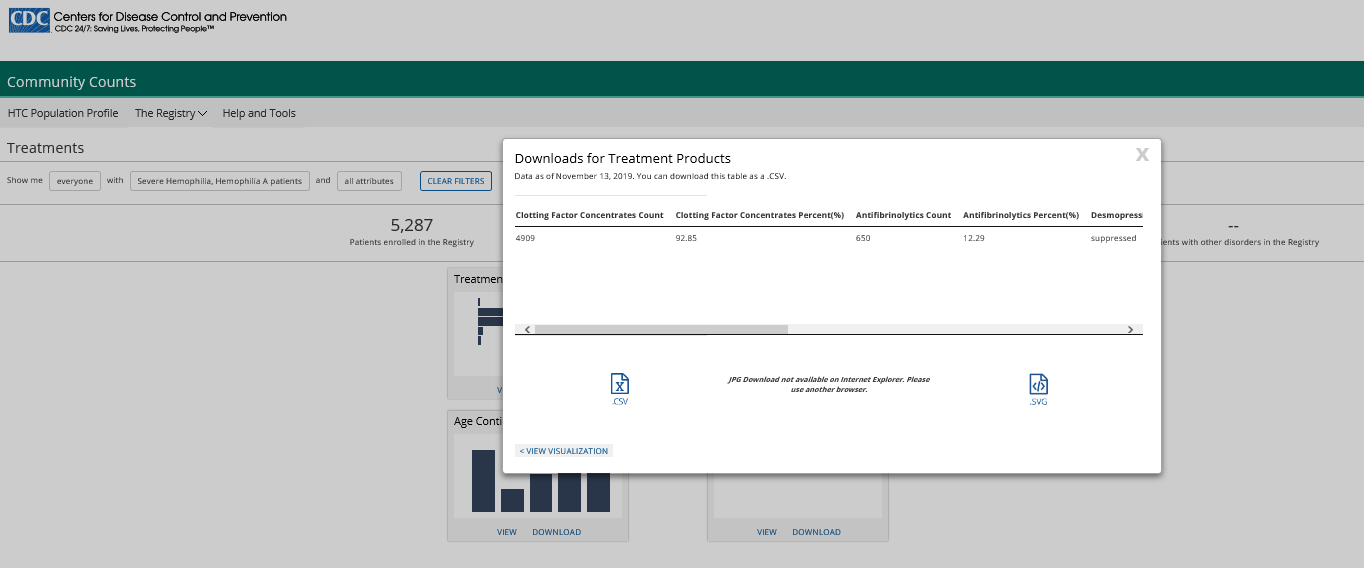
CDC Adds Two New Components to the Community Counts Data Visualization Tool |
|---|

Community Counts is a public health monitoring program funded by CDC’s Division of Blood Disorders through a cooperative agreement awarded to the American Thrombosis and Hemostasis Network (ATHN) in partnership with the U.S. Hemophilia Treatment Center Network. The purpose of this project is to gather and share information about health issues, medical complications, and causes of death that affect people with bleeding disorders cared for in U.S. Hemophilia Treatment Centers.
The Community Counts data visualization tool displays de-identified data on patients with bleeding disorders who are enrolled in Community Counts in an interactive, visual format.
The tool can be used to
The tool can be used to
- Access timely data;
- Identify the number of participants in Community Counts by bleeding disorder;
- Discover facts such as the proportion of people with a bleeding disorder;
- Better understand patients’ experiences living with a bleeding disorder (for example, opioid usage);
- Break down specific relationships (for example, von Willebrand Disease by age); and
- Share new insights and findings.
How do I use the new components?
When you access the tool, click on The Registry tab and select Treatments or Bleeding Disorder Burden.
Treatments: Explore the duration and types of treatment regimens (plans) among persons with blood disorders, such as:
- Regimens currently practiced;
- Types of products used;
- Age at first treatment;
- Age when continuous prophylaxis started; and
- Use of plasma- or blood-derived products.

Bleeding Disorder Burden: Better understand patients’ experiences living with a blood disorder by exploring different charts and attributes. Discover facets of living with a bleeding disorder, such as:
• Location of care;
• Type and number of hospital visits;
• School and work absenteeism;
• Chronic (long-term) pain and its relationship to opioid use; and
• Other medical conditions.

Below is an example of an analysis that a user might do to learn more about the use of clotting factor concentrate among patients with severe hemophilia A:
First, under The Registry tab, select Treatments, then under filter options select all diagnoses and select severe and Hemophilia A. Press Apply once the filters are selected.


There are options to explore three types of treatment product categories in the drop-down menu once the Treatment Products graph opens. The chart for Clotting Factor Concentrates shows that among patients with severe hemophilia A, 8% use plasma-derived treatment products and 13% and 77% use extended half-life and standard half-life clotting factor concentrates (the two different classes of recombinant factor products available today), respectively.

There also is an option to view the data in table format. Press Data Table/Download for a table that can be downloaded in either .csv or .svg formats.

How can I get more information about Community Counts and NCBDDD’s Division of Blood Disorders?
For more information about the data visualization tool, Community Counts, the Division of Blood Disorders, or ATHN, please visit the links below:























.png)











No hay comentarios:
Publicar un comentario